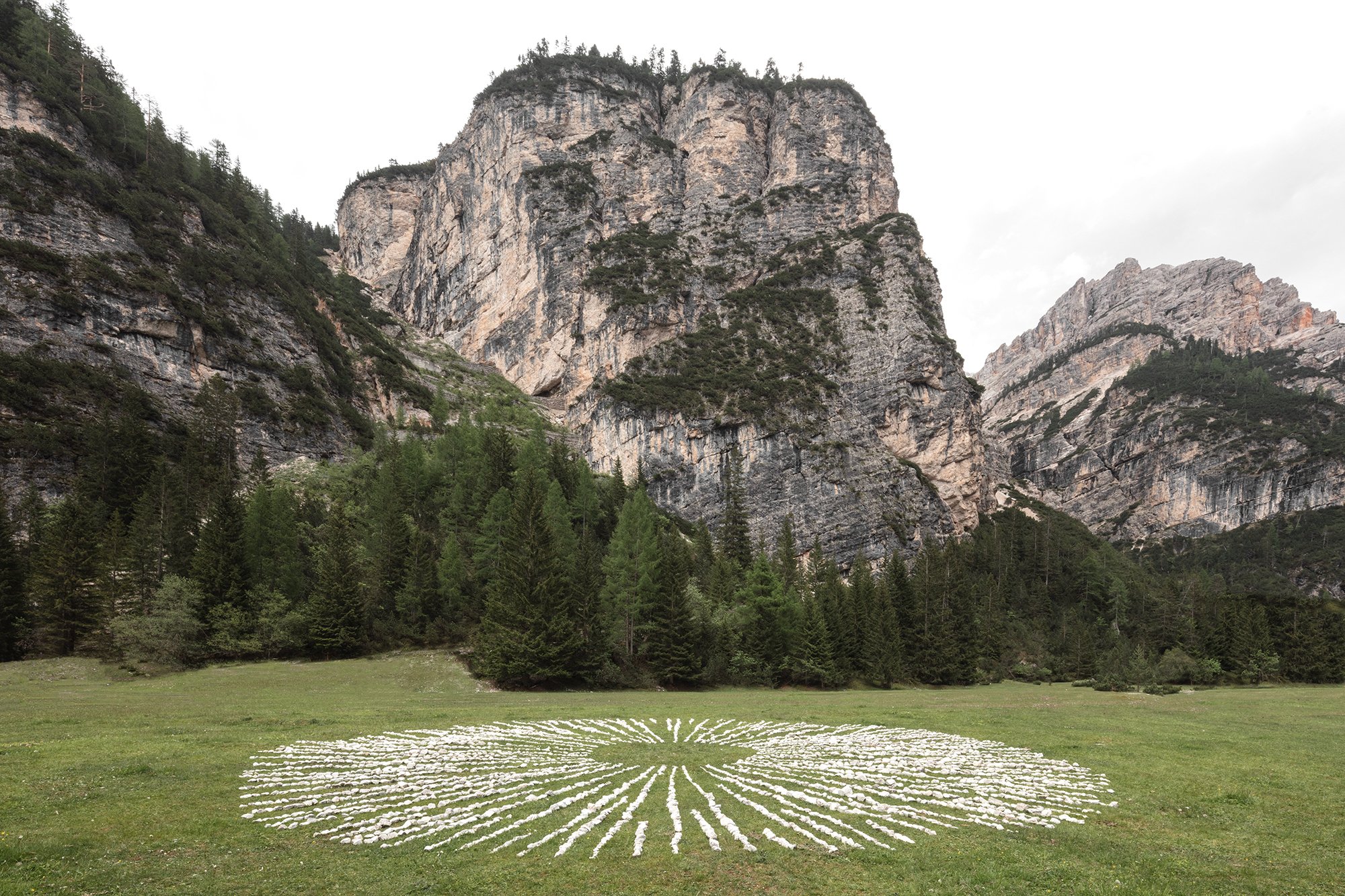Explosion
Egeon
Egeon’s work, like most land art, uses only material found on site. The installation merges with the landscape and also refers to its war-torn past. This was the location of the Austro-Hungarian army infantry’s military barracks during World War I. This circle of rocks resembles a dolomite mandala or the ruins of an ancient building when seen up close; however, when observing it from above, it truly does resemble an Explosion. Not one caused by violence, rather the outline is traced by the fly agaric’s spores, one of the most iconic mushrooms. Explosion is an homage to the past, a symbol of caution for the present, and a celebration of this complex network – mushrooms’ hypha – which connects many natural living beings.
The work was realized thanks to the help of Daniele, Ruben, Giulia, Christian, Rosario, Michela, Miller and Armin.



Exhibit place Pederü
The wealth of water and the strategic location to the front line is why the Kaiserjäger chose this location. Local karst springs are abundant and, to this very day, are a source of drinking water for San Vigilio di Marebbe. The water surfaces after flowing underground for over 2-km from the Fanes’ karst plateau.











